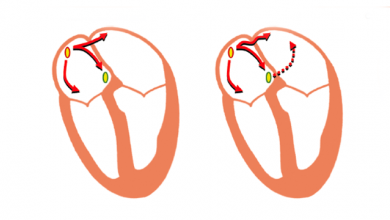Search results
Anisotropic Cardiac Conduction
Author(s):
Irum D Kotadia
,
John Whitaker
,
Caroline H Roney
,
et al
Added:
3 years ago
Article
Value of Sinus Rhythm Mapping
Author(s):
Mathijs S van Schie
,
Natasja MS de Groot
Added:
1 year ago
Article
Author(s):
Demosthenes G Katritsis
Added:
3 years ago
Author(s):
Caroline H Roney
,
Andrew L Wit
,
Nicholas S Peters
Added:
3 years ago
Determining optimal treatment strategies for complex arrhythmogenesis in AF is confounded by the lack of consensus on the mechanisms causing AF. Fundamental to defining arrhythmogenic mechanisms of AF are the distinctions and interplay between functional features (determined by the electrophysiology of a cell) and structural features (determined by whether a structural or anatomical feature is…
View more
Author(s):
Konstantinos N Aronis
,
Rheeda L Ali
,
Jialiu A Liang
,
et al
Added:
3 years ago
The pathophysiology of AF is complex and incompletely understood to date.1,2 AF is a progressive disease of the atria involving a multitude of mechanisms related to its initiation, maintenance and progression. Experimental evidence suggest that AF is characterised by alternations in atrial size, shape electrophysiology, autonomic innervation, and cardiomyocyte metabolism, as well as development…
View more
Ventricular Tachycardia Isthmus
Author(s):
Ruairidh Martin
,
Meleze Hocini
,
Michel Haissaguerre
,
et al
Added:
3 years ago
Article
Author(s):
Jonathan W Waks
,
Mark E Josephson
Added:
3 years ago
Atrial fibrillation (AF), the most common sustained arrhythmia, is a leading cause of stroke, and is associated with significant morbidity and mortality worldwide. Despite its frequency, clinical importance, and advances in technology and our knowledge of the molecular, ionic and physiological fundamentals of cardiac electrophysiology, our limited understanding of the mechanisms that initiate and…
View more
Author(s):
Zhao Liu
,
J Kevin Donahue
Added:
3 years ago
In the United States, atrial fibrillation (AF) is the most common sustained cardiac arrhythmia affecting approximately six million patients and contributing to a greatly increased risk of stroke, heart failure (HF) and overall morbidity and mortality.1,2 The prevalence of AF is increasing as the average age of the population increases.3,4
Currently available therapies for AF are suboptimal…
View more
Mapping AF Structural Substrates
Author(s):
Ahmed M Al-Kaisey
,
Ramanathan Parameswaran
,
Jonathan M Kalman
Added:
3 years ago
Article















